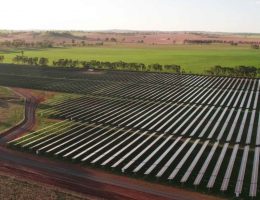The clean energy sector’s general consensus on the latest Morrison budget is that it is a massive missed opportunity to set Australia up for a low emissions future, and contains funding only for previously announced policies and offers little in terms of a clean energy stimulus package.
The federal budget, delivered by Treasurer Josh Frydenberg on Tuesday night, included the initial allocation of new funding to the Australian Renewable Energy Agency, which will receive $1.4 billion over the next 12 years, along with a series of additional investments in new electricity grid infrastructure projects.
The budget also delivered $53 million to support the governments ‘gas led recovery’, more than $250 million for new liquid fuel storage facilities, and funding for upgrades to the Vales Point coal fired power station.
“Our 2020-21 Budget initiatives will help to lock in lower energy prices while simultaneously developing the backbone of a reliable, lower emissions National Electricity Market (NEM) for the next decade and beyond,” federal energy minister Angus Taylor said.
“As we rebuild from the COVID-19 pandemic, the Government will also accelerate the development of low emission technologies to help reduce emissions, strengthen energy security and support jobs.”
However, the budget has not been received well by the clean energy sector. The Clean Energy Council described the budget as a “missed opportunity” having failed to embrace the possibility of a clean energy led economic recovery.
“There was enormous support for Australia to follow the many countries in prioritising a clean recovery from right across the spectrum – big business, community groups, energy experts and economists,” the Clean Energy Council said in a statement.
“It’s disappointing the Australian Government has largely ignored the unparalleled opportunity to create regional jobs, while reducing emissions and setting Australia on a path to become a global clean energy superpower.
“Unfortunately, the budget commitment for the previously announced feasibility study into a new coal-fired power station in Collinsville and funding for an expansion of Vales Point – one of Australia’s oldest and dirtiest power stations – will only add to investor confusion and uncertainty about the Australian Government’s energy policy priorities.”
It was a sentiment echoed by Independent MP Zali Steggall, who said it was disappointing to see public funds being used to cover the costs of upgrades to coal fired power station, while snubbing clean energy technologies.
“We need large scale clean technology projects that will build this nation, boost jobs and set Australia for a sustainable, prosperous future,” Steggall said.
“Somehow, an upgrade to Liberal Party donor Trevor St. Baker’s Vales Point Coal Plant snuck into this budget. This is public investment that should be spent on electric vehicles or battery manufacturing. This is symbolic of this Government’s backwards facing outlook.”
Leading economist, the University of Queensland professor John Quiggin, said that the budget confirmed that Australia was falling behind other countries in climate action, particularly following China’s commitment to a zero emissions target. The budget largely ignored electric vehicles, with little by way of new funding to support electric vehicle uptake or charging infrastructure.
“The budget is a missed opportunity to reset Australia’s failed climate policy, in the light China’s commitment to a net zero target and the likely election of a Biden Administration committed to big reductions in US emissions,” Quiggin said following the budget.
“Instead, we got a string of backward looking gestures including subsidies for an obsolete coal-fired power station, another go at the failed technology of carbon capture storage and a continued push for gas.”
“Despite having no domestic vehicle manufacturing industry to worry about, and a problematic dependence on imported petroleum the government has done nothing for electric vehicles and ignored the problem of fuel efficiency yet again.”
Environmental groups welcomed the confirmation of new funding to the Australian Renewable Energy Agency, with the budget delivering the agency $223.9 million in new funding over the next four years, out of a $1.4 billion commitment that will be stretched out over the next twelve years. However, this funding has been largely dwarfed by the support that continues to be provided to the fossil fuel industry.
“We welcome ongoing funding for Australian Renewable Energy Agency (ARENA) and the Clean Energy Finance Corporation (CEFC), but of the $1.4 billion announced for ARENA only $223.9 million is allocated over the forward estimates,” Australian Conservation Foundation CEO Kelly O’Shanassy said.
“Mining companies are winners, taking around 45% of the fuel tax credit scheme, which is worth $15 billion to them over the forward estimates. The fuel tax credit subsidy, which allows multinational mining companies like Rio Tinto, BHP and Glencore to pay zero tax on their off-road diesel use, will cost Australians $33 billion across the forward estimates.”
“Coal mining companies alone will receive more than $1.2 billion a year in diesel fuel subsidies over the forward estimates.”
The Carbon Markets Institute said that the federal budget continues to reflect a refusal from the Morrison government to commit to long term emissions reduction targets, including a refusal to commit to a net zero emissions target by 2050.
“Australia needs to align compliance and voluntary markets to the task of transitioning to an economy with net-zero emissions by 2050. Major trading partners are implementing similar targets, the threat of border tariff adjustments loom larger for our carbon intensive economy,” CEO of the Carbon Markets Institute John Connor said.
“The initiatives and funding announced are important and can enhance Australia’s ability to emerge from the COVID recession with a more resilient and cleaner economy but need to be matched with greater urgency and a more timely climate plan for net-zero emissions by 2050.”










